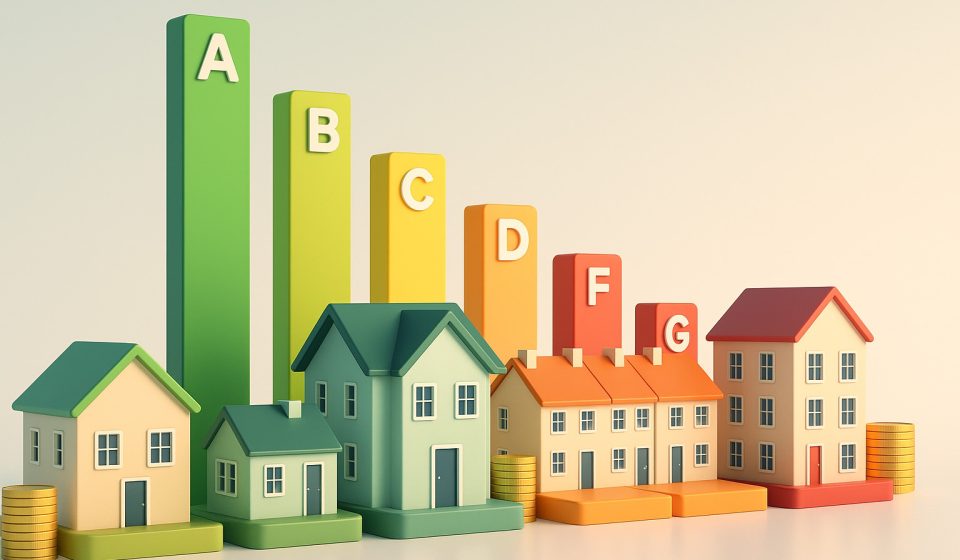In 2025, energy efficiency has stopped being a bonus. Now it’s a bargaining chip. As wild energy prices linger and sustainability pushes its way up every agenda, EPC (Energy Performance Certificate) ratings are shaking up the property market for both buyers and sellers. While the letters might sound technical, their impact on property prices stands out, especially when you dig into regional differences.
Table Of Content
So, what’s the genuine price of a sparkling A-rating? And just how much do D or E ratings knock off your property’s appeal? The answers vary. Some regions are feeling the squeeze harder, while others seem a touch more relaxed.
The EPC Premium: Real, Yet Uneven
Across the country, homes carrying an EPC rating of A or B now fetch a premium of 6–10% above similarly sized properties stuck on D or below. This uplift isn’t evenly spread. Certain southern regions, especially those where sustainability is popular, see the gap stretch even further. Then again, in pockets of the North, where affordability edges out efficiency, that difference often shrinks.
Here’s a sharper look at where EPC ratings are driving prices up or pushing them down:
- South East: Spirited demand for sustainable homes, particularly from downsizers and cash-flush buyers. In eco-conscious districts like Brighton, Oxford, and Guildford, premiums for A-rated homes sometimes reach above 12%.
- London: The capital’s a mixed bag. In the denser boroughs, EPC ratings slide down the list of priorities thanks to the scarcity of space. But move further out, to newer stock in places like Barking or Enfield, and green upgrades turn straight into fatter offers.
- Scotland: Tougher local rules and harsh winters mean EPC ratings influence rural home values more than you’d expect. Properties in the Highlands with a C or better regularly outshine their lower-rated peers by up to 8%.
Poor EPC Ratings: Price Penalties Bite
At the other end, homes saddled with F or G ratings are facing real resistance. Many lenders now restrict mortgages on these properties, especially for buy-to-let investors. The pool of buyers shrinks. Values lag behind.
Older urban stock gets hit hardest. Victorian terraces, 1960s flats – often missing insulation, double glazing, or modern boilers – attract fewer buyers, and it shows in the sale price.
- North West: In places like Oldham and Blackburn, E-rated homes now go for up to £15,000 less than similar C-rated homes just doors away.
- Yorkshire: Landlords are avoiding poor-rated properties, wary of future regulations, which dampens demand in cities like Hull and Wakefield.
- Wales: EPC-related discounts are creeping into Valleys towns, where older homes often fall short of D band, and retrofitting isn’t cheap.
Buyers aren’t just thinking about today’s energy bills. They’re pricing in tomorrow’s upgrade costs, too. Right now, that calculation can swiftly end a sale.
Regional Sensitivities: Where EPC Really Matters
Some markets react sharply to EPC ratings. Usually, these are:
- Green-minded commuter zones like St Albans, Cambridge, and Winchester
- Cold-climate rural areas such as Cumbria, Aberdeenshire, and the Pennines
- Regions dominated by new builds where EPC B or better is standard, so older homes stand out (think Milton Keynes or Ashford)
On the flip side, urban postcodes with thin stock – especially inner London – rarely flinch at a low EPC. Space usually matters more than efficiency when every square metre is at a premium.
Buyers Are Getting Savvier
EPC scores used to get a passing glance. That’s changing. Buyers now use EPC scores as a sharp negotiation tool. If insulation, heating, or glazing doesn’t measure up, offers drop quickly.
As a result, sellers are changing tack. Many carry out rapid upgrades – loft insulation, LED swaps, maybe a new boiler – before putting their property up for sale. A single band improvement can justify a £5,000–£10,000 jump in asking price.
Final Word
By 2025, EPC ratings have muscled their way from the small print to the centre stage. They shape pricing strategies, sway buyer behaviour, and decide whether a home attracts interest or gets ignored. For regions still wrestling with affordability, poor energy efficiency is starting to feel like an extra tax on your sale price – a hidden discount that buyers expect upfront.
Whether you’re preparing to list a flat in Glasgow or eyeing a farmhouse in Devon, knowing your EPC rating is critical. In a market hungry for certainty, efficiency has become a quietly powerful asset.


